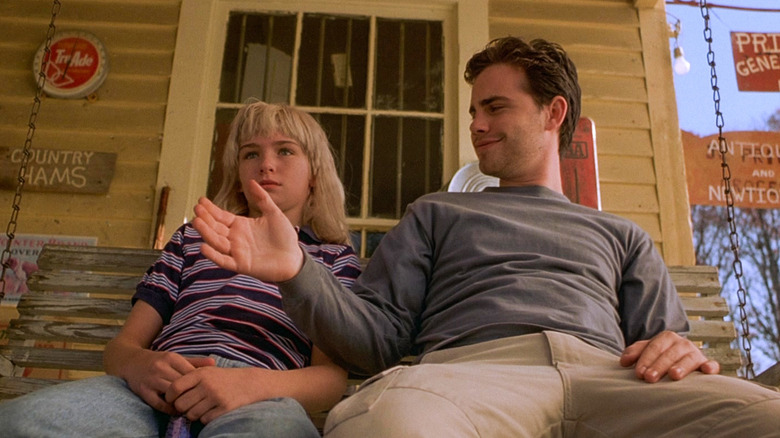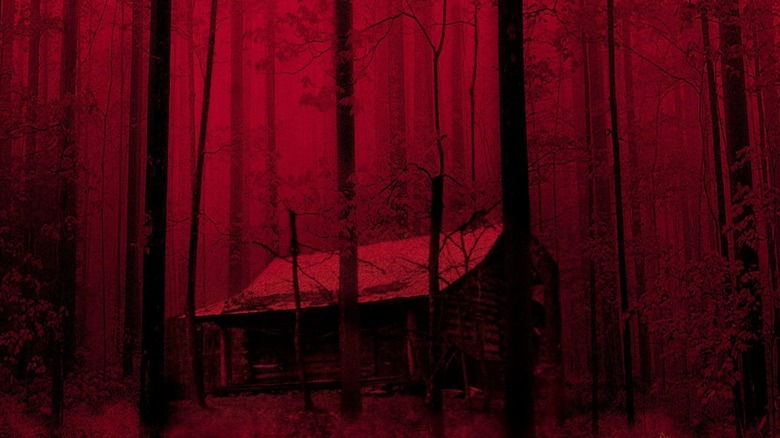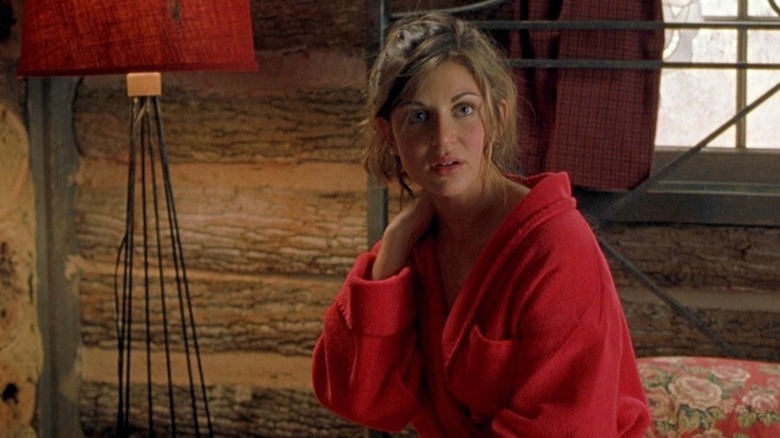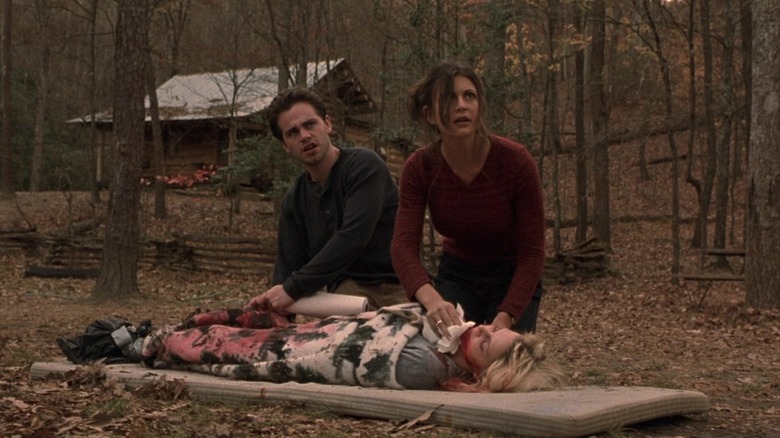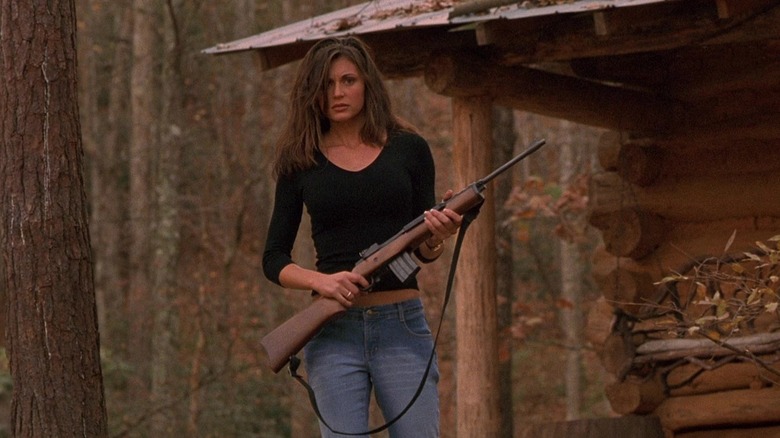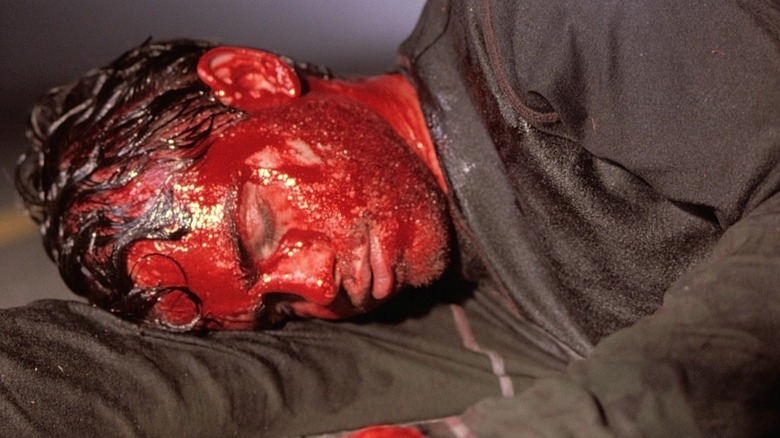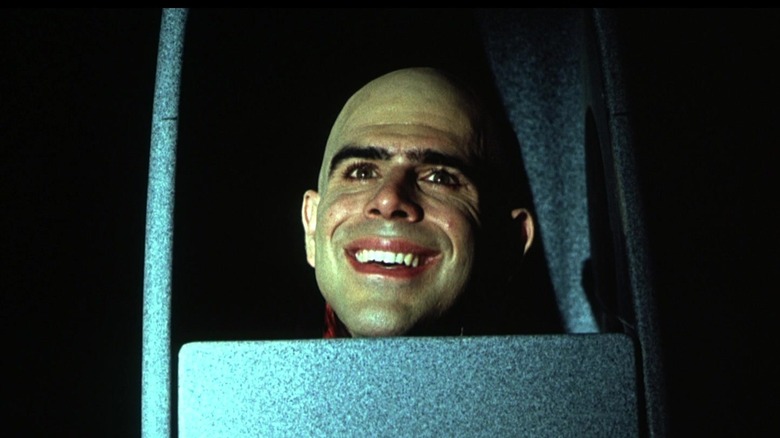20 Years Ago, The Low Budget Box Office Hit Cabin Fever Launched Eli Roth's Career
(Welcome to Tales from the Box Office, our column that examines box office miracles, disasters, and everything in between, as well as what we can learn from them.)
"I wrote that movie when I was 22 and when I wrote it, everyone told me, 'This will never get made, that is a piece of s*** and this is a terrible script,'" Eli Roth said to Collider in 2015 of his debut feature film "Cabin Fever." Yet here we are, a full 20 years after the movie was released in the fall of 2003. Not only did the movie become a hit in its own right, but it spawned several sequels and even a remake in 2016. "Now I can say the script that everyone hated I can say was so good they made it twice [Laughs]," Roth quipped in the same interview.
Roth has reason to be a little bit smug about the whole thing. The filmmaker's resume now also includes hits like "Hostel" and one of Netflix's first original shows, "Hemlock Grove," not to mention a starring role as the Bear Jew in Quentin Tarantino's "Inglorious Basterds." That entire career begins with Roth scraping together just enough money through independent financing to put together his take on cabin in the woods horror that, in the end, made quite a bit of money.
In this week's edition of Tales from the Box Office, we're looking back at "Cabin Fever" in honor of its 20th anniversary. We'll explore how the idea originated, how Roth ultimately managed to get the movie's budget together, how a 12-year-old kid ensured the movie got finished, what happened when it hit theaters, and what lessons we can learn from it two decades removed. Let's dig in, shall we?
The movie: Cabin Fever
Roth wrote "Cabin Fever" with his old NYU film school roommate Randy Pearlstein. They had collaborated on a number of shorts during school but had yet to make a feature. Roth did have Hollywood experience, though, having worked with David Lynch, including helping the filmmaker launch his website in the early 2000s, as well as writing scripts that went unproduced. Attempting to raise funds for his first feature — a pretty modest, mostly isolated horror film — proved to be remarkably difficult. Speaking to HuffPost in 2010 for the "Cabin Fever" Blu-ray release, Roth explained how hard it was to actually get the film made.
"I spent six years raising the money, going to every studio over and over, and they all passed repeatedly. Literally every studio, production company, and producer in existence passed on the film, until I partnered with independent producers Lauren Moews, Evan Astrowsky, and Sam Froelich, who really believed in it. We teamed up and raised $1.5 million dollars of private money and just went to North Carolina and shot it."
The film centers on a group of friends spending time at a cabin. When one of them mistakenly shoots a local man with a skin infection, they abandon him and leave him for dead. He stumbles into a reservoir and infects the water supply. The friends then have to struggle to stop a highly contagious, flesh-eating disease while also contending with a group of vengeful backwoods locals.
$1.5 million is a tiny sum by Hollywood standards. Even adjusting for inflation, that would only be around $2.5 million in today's dollars. But that's an awful lot of money for independent financiers who aren't used to dealing with the movie business. That complicated matters for Roth and his producing partners.
Trouble with the money
Roth's troubled project got a nice little shot in the arm in 2001 when Lynch, director of "Eraserhead" and "Twin Peaks," agreed to sign on as an executive producer. Per a Variety report at that time, Michael Rosenbaum ("Smallville") was going to star. That ultimately didn't come to pass. Similarly, Lynch's name wouldn't end up on the final product, signaling just how much things changed while they were trying to put the film together.
As Roth explained in that same HuffPost piece, the financing was cobbled together through various sources. Just because they had the money on paper didn't mean they actually had it in hand. At various points during the process, that became an issue. For one, on the first day of filming, the production was shut down. "We didn't think this movie was going to get made. The first day of shooting, our independent investors pulled out because of the anthrax scare," actor Rider Strong, one of the leads in the film, explained in an interview.
Bear in mind, this was shortly after 9/11 and the world was very much adjusting. Luckily, that shutdown was temporary. But even under the best of circumstances, filming a movie like this was going to be difficult. Roth, in a Q&A with Cinema.com, explained why:
"On a film like 'Cabin Fever,' which takes place primarily in the woods, we needed actors who were not just right for the role, but ones that were professionals and did not mind working long hours drenched in blood. The actors truly went above and beyond what was required of them."
Finishing the movie gets messy
Eventually, Roth managed to get the film in the can. In post-production though, issues emerged. They needed a large chunk of dough to finish the film. Some of the investors were holding out. Amazingly enough, as Roth revealed in that HuffPost interview, it was a 12-year-old who turned the tide:
"We were on the mixing stage when a group of investors was holding off on wiring in the final $350,000 so we could sound mix and negative cut. Turns out they were showing a VHS of our rough cut to one of the investor's 12-year-old kid! He watched it and said 'This is better than American Pie.' Then they agreed to wire the money. The fate of the film came down to the taste of a 12-year-old, if you can believe it."
Bear in mind, at the time, "American Pie" was only a few years old. The film was a massive hit, taking in $235 million against a mere $11 million budget. That being the case, the investors seemingly thought, this comment was a good omen. But the filming process itself was another headache entirely, for various reasons.
Midnight Madness
Once the film was nearly complete, the Toronto International Film Festival's Midnight Madness programmer Colin Geddes got hold of a VHS copy of "Cabin Fever." At the 11th hour, he secured a closing night slot for Eli Roth's film at the festival in 2002. That slot enabled Roth and his producers to get the film finished and get it in front of distributors. After the first press and industry screening, it was clear things were going well.
"Ten minutes into the film, we had sold out the U.K. By the time the credits rolled, I walked out into a sea of distributors, who swarmed me shouting offers," Roth said in a 2013 piece he wrote for The Hollywood Reporter. "The bidding war lasted through the night, and by the time we had our Midnight Madness screening four days later, I was able to announce our sale to Lionsgate for $3.5 million, and $12 million P&A."
Indeed, Lionsgate, then just a few years old, won the day. It would prove to be a good investment. The issue for Roth is that they ended up altering his cut in ways that made him pretty unhappy. Speaking with Comingsoon.net in 2010 he explained:
"All of the cuts were made for time, like four or five minutes, but there was one cut involving a scare that I was bummed about. There's other stuff, just dialogue and character things that don't make sense ... I thought one of the things that made the movie work was the characters. The weird characters. It's a hang out movie. You put the movie on and you feel like you're hanging out with those characters. Part of the thing they said to appease me is they told me we'd do a director's cut DVD. But then there [were] various changes over there and it never got done."
Eventually, Roth got to make his director's cut on DVD but, more importantly, despite the cuts, his first film was about to become a theatrical success.
The financial journey
Lionsgate decided to release "Cabin Fever" on September 12, 2003, roughly a year after the acquisition. It was sort of that sweet spot for a horror movie in the pre-Halloween, early fall window. September can sometimes be a little dry and leaves room for sleeper hits. That's exactly what this movie became as other, flashier movies came and went in the weeks that followed.
Roth's feature film debut opened at number three on the charts behind "Once Upon a Time in Mexico" ($23.4 million) and "Matchstick Men" ($13 million), pulling in $8.4 million. Not topping the charts isn't really an issue when the movie only costs $1.5 million to produce, plus what Lionsgate spent. All in, the studio needed to make around $16 million to recoup the investment. Things looked very good.
The following weekend, a handful of new releases crowded up the marketplace, including the major franchise-starting "Underworld" and "Secondhand Lions." It hardly mattered. Even though it fell to number seven on the charts, "Cabin Fever" drooped 53.6% and added another $3.9 million to its total. And so it went, even as big hits such as "The Rundown" and "School of Rock" arrived to take even more of the spotlight.
All told, the film finished its run with $21.1 million domestically to go along with $9.4 million internationally for a grand total of $30.5 million. Also worth taking into account is that home video — particularly DVD — was a much bigger deal at this time. The movie undoubtedly did very well after its theatrical run on that front, not to mention cable rights and, later, streaming rights over the years. Case in point, we've since had a sequel with 2010's "Cabin Fever 2: Spring Fever," a prequel in 2014 titled "Cabin Fever: Patience Zero," and a remake in 2016.
The lessons contained within
Roth's scrappy little horror movie started a nice little franchise and was more than enough to jumpstart his career, with the filmmaker moving on to do 2005's particularly brutal hit "Hostel." He's been working very steadily ever since not only as a director, but a writer, producer, and even host on shows like "Eli Roth's History of Horror." His adaptation of the "Borderlands" video game is currently in post-production and his long-awaited movie "Thanksgiving," based on the fake trailer from "Grindhouse," is coming out later this year. The man remains remarkably busy.
It ultimately took him eight years to get "Cabin Fever" made and, even after securing distribution, he had to watch the cut he loved get chopped up for its theatrical release. But, eventually, he got to put his director's cut out in the world. Eventually, his script that he was assured would never get made was "so good they made it twice." Even now, his career is seemingly all about patience. That fake trailer for "Thanksgiving" was made in 2007 and now, 16 years later, he's actually getting to make that movie.
Beyond that, Roth waited years before tackling anything with a bigger budget. His "Death Wish" remake cost $30 million to make, while "The House with a Clock in its Walls" cost $42 million. Both of those came out in 2018 — 15 years after his first movie. Even now, "Borderlands" represents his first true blockbuster, even if things haven't gone swimmingly behind the scenes. Roth has largely stayed in his lane, exercised patience, and made the most of his opportunities. You don't have to love Roth's work — or even like it — to recognize that his career is impressive.
